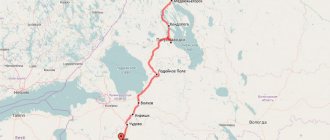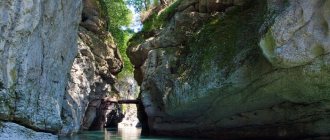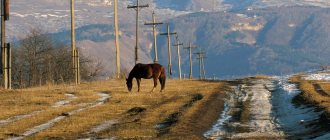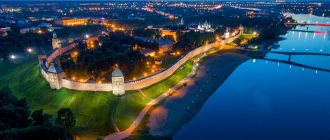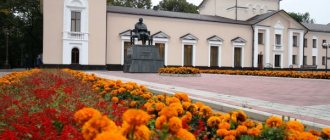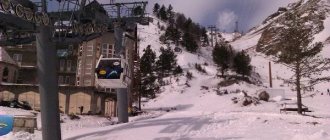1 region on cars means that the vehicle is registered in the Republic of Adygea. The founding date is considered to be July 27, 1922 . The subject was located on the basis of the Maikop and Ekaterinodar departments of the Kuban-Black Sea region.
Stages of formation of the region:
| 07/27/1922 | Adygea (Cherkessia) Autonomous Region |
| August 1928 | Adyghe Autonomous Region |
| 07/03/1991 | Republic of Adygea |
Federal District
The region's territory is part of the Southern Federal District , which also includes:
| № | The subject of the Russian Federation |
| 1. | Republic of Adygea |
| 2. | Astrakhan region |
| 3. | Volgograd region |
| 4. | Republic of Kalmykia |
| 5. | Krasnodar region |
| 6. | Rostov region |
| 7. | Republic of Crimea |
| 8. | City of Sevastopol |
Yandex.MapsSouthern Federal District — Yandex.Maps
Coat of arms of the republic
The appearance of the main symbol of the region, the coat of arms of the Republic of Adygea, has the following features : a circle with a light brown border, inside a semicircle in white letters on a black ribbon in two state languages (Russian and Adygea): “ Republic of Adygea ” and “ Adygea Republic ”. Between these inscriptions is a large light brown and white star , signifying the unity and brotherhood of the multinational composition of the region.
On the lower right along the edge green oak and maple leaves And at the bottom left, also along the edge, there are ears of corn. At the base are the symbols of the Russian Federation: “RF” , between the letters there is a bull’s head, talking about the golden treasures of the Maykop mound, and above it is the national table of the subject - ane with bread and salt .
Well, in the center of the coat of arms is the main character of the Nart epic Sauseryko with a flaming torch in his hand, riding a fiery horse soaring in the air above an eagle. This means that the republic is striving for progress . Behind it you can see the dawn - the sun and 12 rays emanating from it with twelve stars at the ends, symbolizing the 12 Adyghe tribes.
Guzeripl
At the foot of the Main Caucasus Range, at an altitude of 670 meters above sea level, the village of Guzeripl (Adygea) is located, surrounded on all sides by mountain ranges, which creates a special, healthy microclimate here. The village of Guzeripl is located seventy-six kilometers from the capital of Adygea - Maykop, and forty-six kilometers from the Khadzhokh railway station and the village of Kamennomostsky. The village itself is located on the border with the Caucasian Biosphere Reserve, and a reserve cordon has been created near the village.
Nationalities
More than 60% of the population is Russian, the rest are given in percentage terms in the table.
| Nationality | Share of population, % |
| Russians | 63,6 |
| Adyghe people | 25,2 |
| Armenians | 3,7 |
| Ukrainians | 1,4 |
| Kurds | 1,1 |
| Circassians | 0,6 |
| Other nationalities | 2,3 |
| Those who have not decided on nationality or have not provided information | 2,1 |
Literature
- Dzhanashvili M. G. News of Georgian chronicles and historians about the North Caucasus and Russia: Sat. to describe the areas and tribes of the Caucasus. Tiflis, 1897;
- Kulakovsky Yu. Where the temple for the Avazgs was built by Emperor Justinian // Archaeological news and notes. M., 1898. T. 5. No. 2. P. 33-37;
- Prozritelev G.N. Ancient Christian monuments in the North Caucasus. Stavropol, 1906;
- Lavrov L.I. Pre-Islamic beliefs of the Adyghe and Kabardians: Research. and materials on issues of primitive religions. beliefs. M., 1959;
- Panesh E. Kh. Stages and nature of the spread of Christianity among the Circassians (V-XII centuries) // Problems of studying traditions in the culture of the peoples of the world. M., 1990. Issue. 1;
- Ageeva R. A. What kind of tribe are we?: Peoples of Russia: names and destinies: Dictionary-reference book. M., 2000. P. 26-30.
Administrative division
The territory is administratively divided into 7 districts and 2 republican urban districts of republican significance (48 rural settlements and 3 urban settlements)
| Maykop Republican Urban District |
| Adyghe Republican Urban District |
| Giaginsky district |
| Koshekhablsky district |
| Krasnogvardeisky district |
| Maykop district |
| Takhtamukay district |
| Teuchezhsky district |
| Shovgenovsky district |
Economy
Adygea is an industrial-agrarian republic. Agriculture is one of the priority areas of economic development. The leading place is occupied by the growing and processing of grain, sugar beets, oilseeds, vegetables and fruits, the raising of cattle, pigs, sheep, poultry, and horse breeding.
A healthy climate and fertile land ensure environmental purity and impeccable quality of agricultural products. We are especially proud of the northernmost tea in the world. And Adyghe cheese is known all over the world.
The main industries are engineering, metalworking, food, forestry and woodworking. Small businesses are dominated by trade and public catering.
Transport
The transport infrastructure of the Republic of Adygea is most developed in the field of road, rail and pipeline.
Air
Maikop civil airport is primarily intended for passenger air transportation and mail and was registered as international 1997 Now air service operates with the capital of Russia, Moscow, and abroad.
Automotive
The following routes pass through the republic:
- A146 "Krasnodar - Verkhnebakansky";
- M4 "Don";
- R-217 "Caucasus".
Motor transport is important in the industry, as in other regions. But the geography of Adygea is such that a huge flow of cargo and passenger transportation falls on road transport. General paved roads stretch for more than 3 thousand kilometers.
Yandex.MapsA-146 — Yandex.Maps
Railway
The length of the republic's railways is 170 km . The very first line was built in 1947 from Krasnodar to Tuapse , which is of very great economic importance for the region. What is important for residents of Adygea is that they have the opportunity to go to the sea to improve their health.
Main branches:
- Novosibirsk – Krasnodar;
- Armavir – Tuapse;
- Belorechenskaya - Maikop - Kamennomostsky.
Connection with other regions:
- Rostov region;
- Krasnodar region;
- Stavropol Territory;
- other regions of the North Caucasus.
Rail freight transportation includes agricultural products, building materials, timber, oil, and wood processing industries.
Water
The republic has a river port.
Pipeline
This subject of the Russian Federation has another type of transport - pipeline. It delivers gaseous and liquid products. This highly specialized type of transport is very promising for the region.
Religion
The majority of the population of Adygea is Orthodox, about a quarter of the population are Sunni Muslims of the Hanafi persuasion, a small number are Catholics and adherents of other religions. There are 16 Islamic organizations, an Old Believer community, the Armenian Church of the Holy Resurrection, three Baptist communities and a Seventh-day Adventist community operating on the territory of the republic.
Russian Orthodox Church
In 1829, the Don Diocese was formed, which included the territory of Adygea. From April 4, 1842, Adygea was within the newly established Caucasian and Black Sea (Stavropol) diocese.
Since 1919, by decree of the Provisional Church Administration in the South-East of Russia, an independent Kuban diocese was formed. In the 1920s, the Maykop Vicariate of the Kuban Diocese was established.
On March 28, 1991, the Maykop deanery of the Krasnodar diocese was created with its center in Maykop.
On February 26, 1994, an independent Maykop diocese was established on the territory of the Republic of Adygea and thirteen districts of the Krasnodar Territory. On December 28, 2000, parishes located within the Krasnodar Territory were separated from the diocese.
As of March 2022, there are 59 parishes and one monastery of the Russian Orthodox Church in the Republic of Adygea [1].
Paganism
The pagan beliefs of the Circassians existed for a long time. The deities that the Circassians worshiped were the great god Thyeshkho, the god of the soul Psathye, the god of thunder Shyble, the god of fertility Thyegeledzh, the god of the forest and patron of hunters Mazytkhye, etc. Among the Circassians, relics of pagan beliefs are preserved.
Spread of Christianity
The spread of Christianity among the Circassians was associated with the policy of Byzantium in the Caucasus. The information about the presence of the bishop dates back to the century. Damian of Zikh at the Council of Constantinople in 526, although there is an opinion about an earlier (1st century) spread of Christianity in the region from the Black Sea to Dagestan [2]. According to researcher E. Kh. Panesh, in the 7th century there was a flourishing of Christianity among the Circassians. Christianity came through the Greek. Black Sea colonies, as well as through the neighbors of the Circassians, Christian Abazgia. For at least a century, the Phanagorian See existed: its bishop is listed among those present at the First Ecumenical Council; it is not mentioned further. In the 8th century, the spread of Christianity among the Circassians in the coastal regions continued. An archdiocese was founded in the region of Zichia with a see in Nikopsia. Later, the Matrakh See (Taman) appears: for the first time it is recorded under the name Tamatarkha as a bishopric of the Gothic Metropolis [3]; in the century it is celebrated as an archdiocese within the Patriarchate of Constantinople [4].
In the 10th-11th centuries, the spread of Christianity among the Circassians was facilitated by connections with Russia. It is known [5] that the book. Tmutarakan Mstislav baptized the sons of the Circassians. book Rededi.
Subsequently, the Circassians are influenced by Georgia. Cargo. chronicles report that “The Catholicos of Georgia crowns kings and ordains pastors of all peoples and countries from the Black Sea to Derbend, including Ovsetia and Circassia” [6]. According to E. H. Panesh, “ Christianity began to penetrate the Adyghe tribes already in the first centuries of our era, initially from the Greek colonies, which had constant trade relations with the mountaineers and professional preachers of Christianity. Subsequently, the Christianization of the Circassians was influenced by the Christian peoples of the Caucasus - Georgians and Armenians, as well as neighboring Alans and Tmutarakan Rus."
. But Christianity did not prevail in the 10th-12th centuries; paganism still remained the main belief.
Catholicism was brought to the Caucasus by missionaries in the 14th century. He was accepted mainly by the Adyghe rulers. In the first half of the century, there was a Catholic archbishop and two bishops in the region, and there were Catholic churches and monasteries.
In the 16th century, the need to fight the Crimean Khanate led to the development of military-political contacts between the Circassians and Russia. The visiting princes, together with their people, receive St. Baptism. The Nikon Chronicle mentions that in 1552, Tsar John IV “released the Cherkasy princes on their petition to Cherkasy, and they kissed the cross to the sovereign on the fact that they, with all the land of Cherkasy, should serve the sovereign until their bellies: wherever the sovereign sends them to serve, there they should go »
, in 1555 came “from Cherkassy the Cherkassy princes Sibok-Prince and his brother Atsymguk Prince Zhazhensky, the Cherkassy sovereigns, and Tutaryk-Prince, Ezboluev princes’ son;
Yes, his son Kudadik came with Prince Sibok, and with them there were one and a half hundred people. ...And the Cherkasy princes beat with their foreheads from all over the Cherkasy land, so that the sovereign would grant them help in the cities of Turskoye and in Azov, and in other cities and against the Crimean king, and they were the servants of the king and the Grand Duke, and the Cherkasy princes came with their wives and deportees.” [8]. In 1559, “the children of the Bolshovo prince from Kabarda, Bulgeruk Murza and Salnuk Murza, came from Cherkassy to the Tsar Grand Duke Temiryukov with their foreheads, so that the sovereign would favor them, his servants and establish a defense against the Shevkal sovereign”
[9].
“After one summer, the sovereign and his commanders sent Christian priests to Cherkasy Karbatinsky at their begging, as if they wanted to be baptized”
[10].
Islam
Islam began to spread among the Adyghe people in the 16th century. In 1822, at a national meeting of representatives of the Abadzekhs, Shapsugs and Natukhais, a Sharia court was introduced. However, the position of Islam among these subethnic groups was not strong enough: the former religions prevailed in the mass consciousness. representation. The strengthening of the position of Islam among the Western Circassians in the 19th century is associated with the activities (in 1842-1859) of the naibs of Shamil - Hadji Muhammad, Suleiman Effendi and Muhammad Emin.
By 1920, all Adyghe villages had mosques, which were closed in the 1920s and 1930s, and clergy were repressed.
Since the beginning of the 1990s, there has been a revival of religious life: the number of mosques is increasing, and clergy are being trained. Since 1993, the Spiritual Administration of Muslims of the Republic of Adygea and Krasnodar Territory has been operating. The religious life of Muslims is influenced by the diaspora (after the defeat in the Caucasian War, a significant part of the Circassians were forced to move to the Middle East).
Attractions
Tourism here is intended for lovers of adrenaline and vivid impressions, as well as lovers of very beautiful wildlife. These are caves and turbulent rivers, peaks. You can fly a hang glider, ride a quad bike, or ride a horse through the gorges .
Some of the most popular attractions of the Republic of Adygea (and this is not the entire list):
- Khadzhokh Gorge of the Belaya River
- Lago-Naki
- Waterfalls of the Rufabgo River
- Savranskaya Ropeway
- Mysterious dolmens
- Rope adventure park "Tethys"
- St. Michael Athos Monastery
- Devil's finger rock
- Gorge and waterfalls of the Mishoko River
- Museum of Nature of the Caucasian Reserve
- Granite gorge of the Belaya River
- Lagonaki Highlands (Lago-Naki Plateau)
- Caves of the Lagonaki Highlands
- Fisht-Oshtensky mountain range
- Valley of the Ammonites
Maykop
Located on the right bank of the Belaya River, at the northern foothills of the Caucasus Range, the city of Maykop is rightly considered one of the most beautiful cities in the North Caucasus. It is distinguished not only by the cleanliness and breadth of smooth streets, ease of travel and ideal layout, but also by its amazing beauty, because Maykop is a garden city. The Adyghe toponym Myekkuape was first mentioned in Russian documents from the period of the Caucasian War and dates back to 1825. Currently, most of Adygea's industry is concentrated in the city of Maikop.
Subsections:
Attractions
